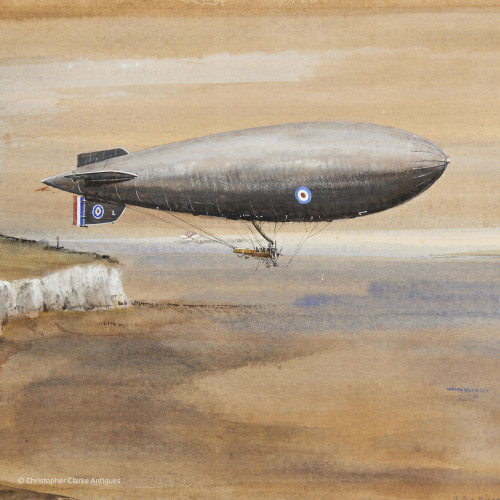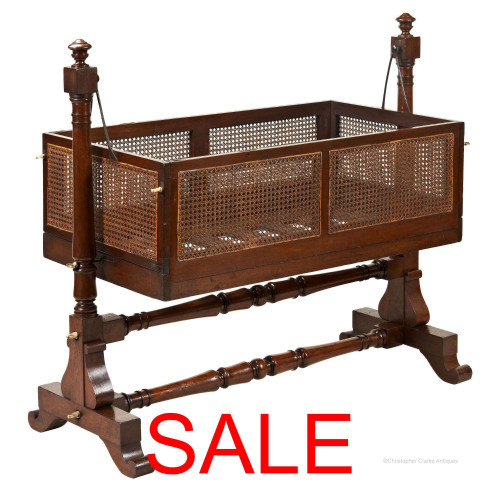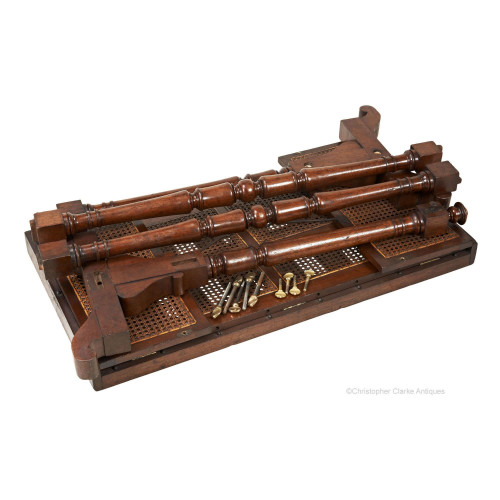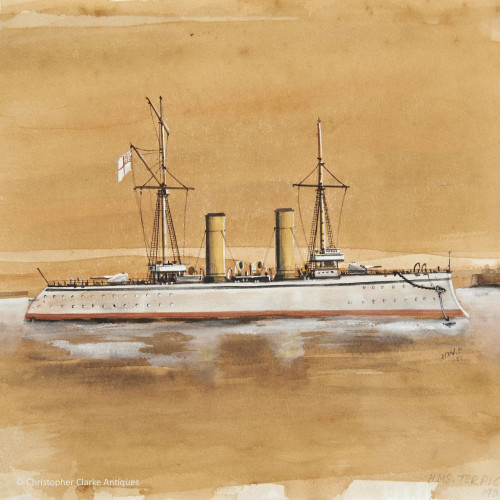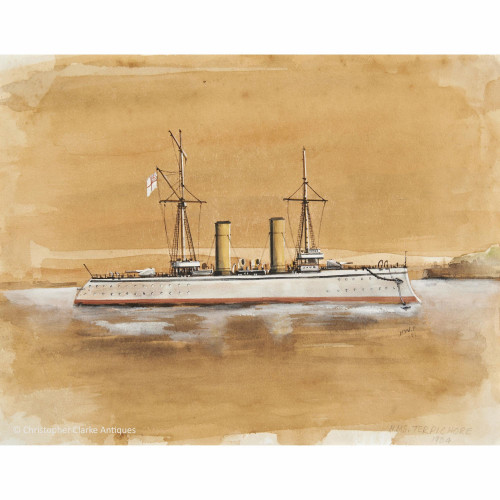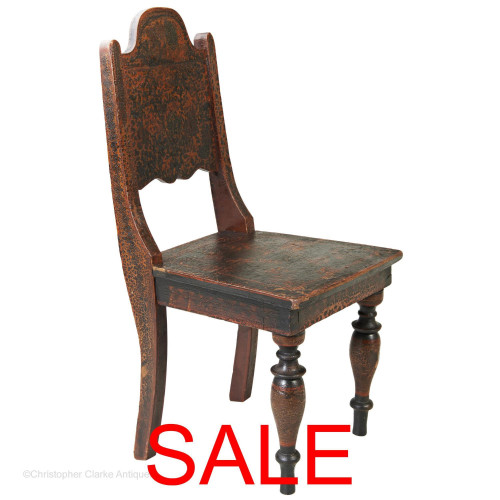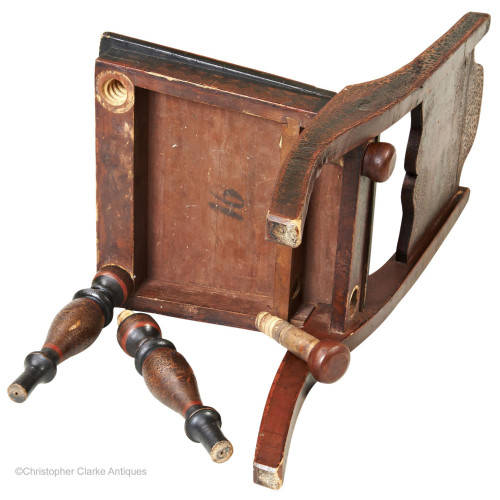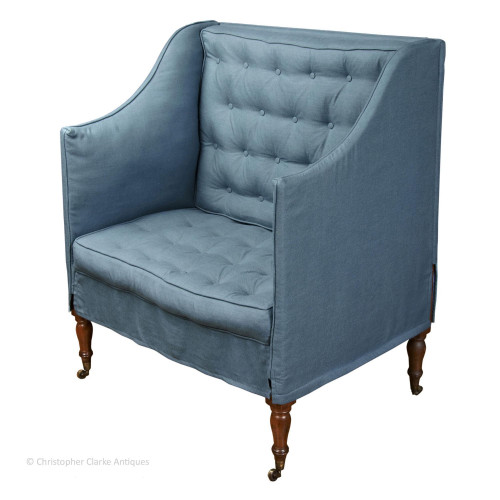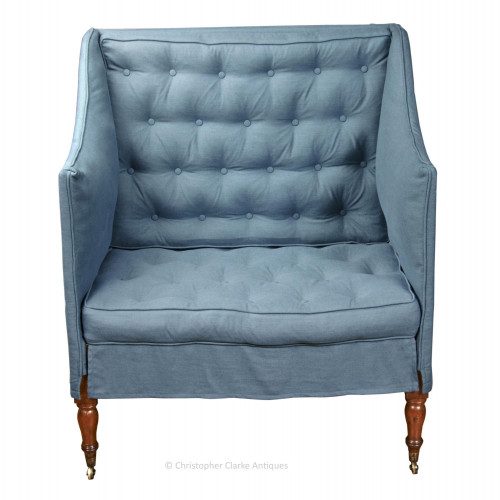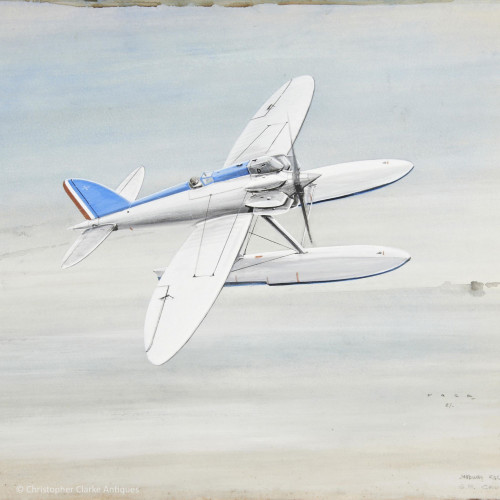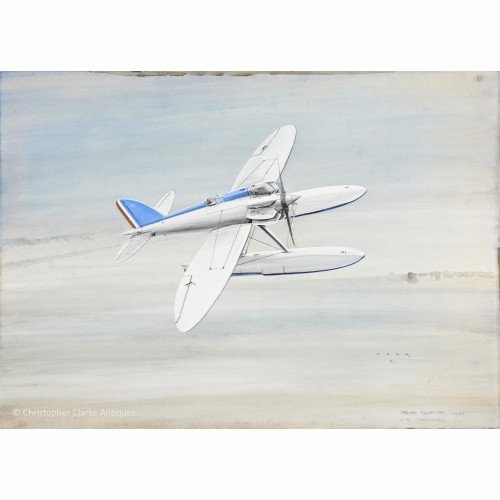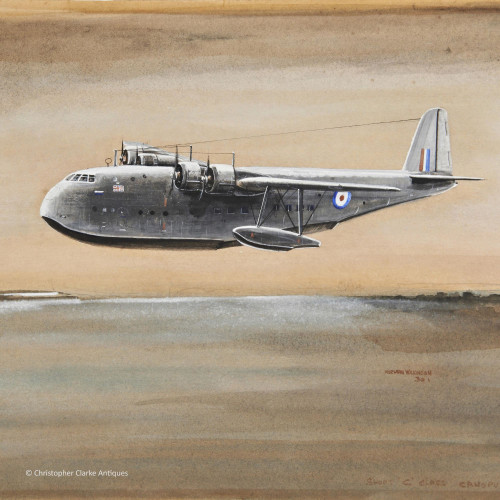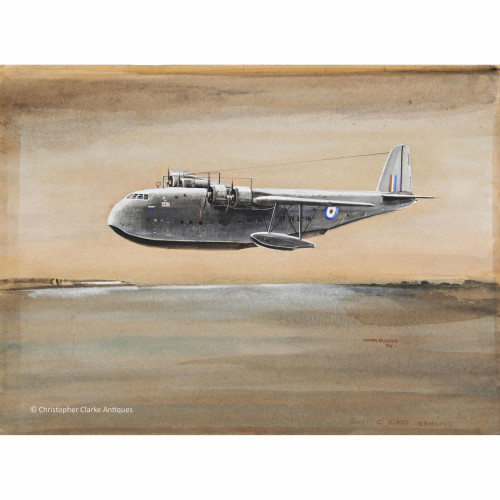Sir Henry Miers Elliot's Cabin Bed by S.W. Silver
Sir Henry Miers Elliot's Cabin Bed by S.W. Silver
82910
A satin birch Cabin Bed by S.W. Silver with caned sides. The triple purpose nature of the Cabin Bed made it a very practical piece of furniture for the limited space in a ship's cabin. The two short panels to the front would prevent the occupant rolling out of bed but, with the release of their fixing bolt and hook, could be folded on their hinges to lay flat under the mattress turning the bed into a sofa. The three drawers give useful storage for its third purpose.
The Cabin Bed sits on eight short legs each with porcelain castors. It would be packed tight to other furniture in the cabin so there would be little danger of it moving but the iron carrying handles could also be used to tie it down if needed. The top half has double caned panels to the front and sides with the back and seat, single caned. There is a dust board between the top of the drawers and the caned seat. The legs and the frame to the front have a bold moulding whereas plain timber has been used to the sides and back as they would be unlikely to be seen when fitted in a cabin. The angle to the drawer fronts, with the bottom edge set further back, is worthy of note. Presumably this attention to detail was to give more comfort with the user able to set their feet further back as you might on a standard sofa.
In their list of 'necessaries' for those travelling, S.W. Silver offered both a 'Cane Drawer Sofa' and a 'Cot or Cane Sofa To Swing or Stand'. It seems they made a few variations of the Cabin Bed and this one differs to that we illustrated in the Captain's Kit Bag. An advert by the company from 1862 also shows 2 different examples available for a First Class Cabin: one similar to this that can be pulled out to extend to become a double bed and one that looks to be made of brass. The differences between this and the other Cabin Bed we have had by the company include the number of legs (eight as opposed to six), the number of drawers (three as opposed to two), the moulding to the front and a flat back rail (the other was shaped). The drawer handles to both cabin beds are stamped 'S.W. Silver & Co. London & Liverpool'.
Aside from S.W. Silver, we know that John Shepherd and Maynard & Co. also offered Cabin Beds. Whereas we have had several Anglo-Indian Cabin Beds, this is only the second example of an English one we have seen. The history of its owner, Sir Henry Miers Elliot, also adds to its interest.
Sir Henry was born in 1808 and by the time he was 18 had been appointed as a civil servant in the Honourable East India Company's Bengal Presidency. His strong understanding of Oriental languages and mathematics led to a number of positions including revenue collection. In studying the established Mughal system for collecting taxes he developed an interest in the history of India and formed an important collection of manuscripts and books on the subject with which to write 'A Complete History of Mohammedan India'. He died before it could be completed but John Dowson continued his work and posthumously published 'The History of India: As Told by its Own Historians' in 8 volumes between 1867 and 1877.
Sir Henry rose to the position of Secretary to Lord Dalhousie's Government of India. He was involved in the handover of the famous Koh-i-Noor diamond by Duleep Singh to the HEIC after the Second Anglo-Sikh War in 1849. The Company then presented the diamond to Queen Victoria. Sir Henry died at the Cape of Good Hope on his return to England in 1853.
Sir Henry's Cabin Bed remained within the family until recently and is accompanied by a letter of provenance from his great-great-granddaughter. This cabin bed stands out for being English, by a good maker and having an interesting provenance. Mid 19th Century.
Dimensions:
Mid 19th Century
S.W. Silver
Ship's Cabin Furniture
Sir Henry Miers Elliot
Good
RELATED ITEMS











